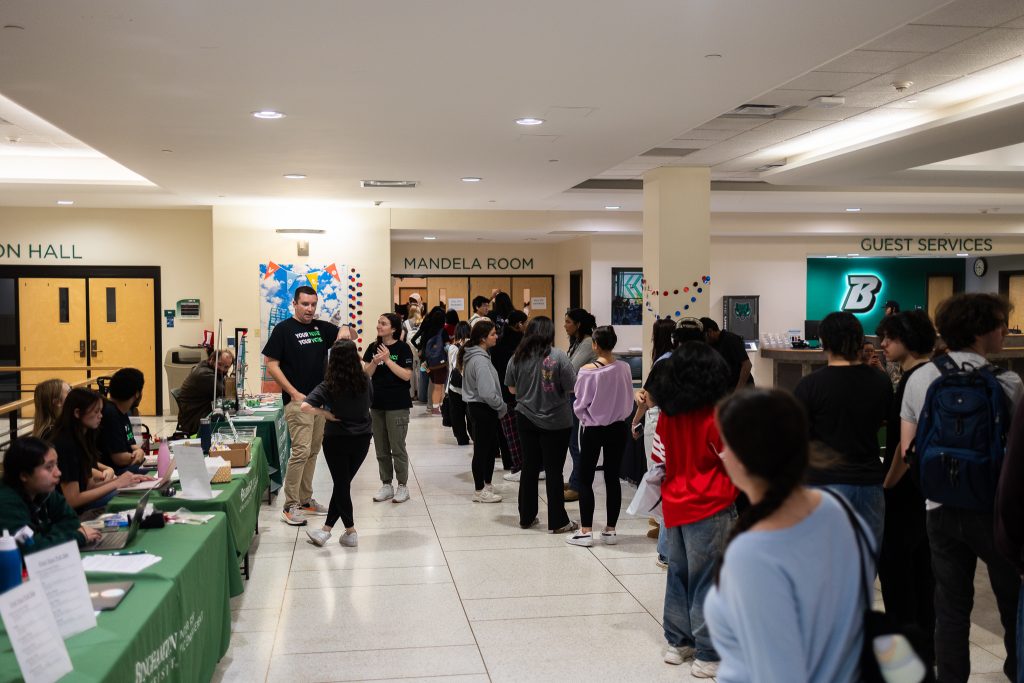Lines of students eagerly awaiting a chance to cast their ballot in last week’s general election took over the University Union on Election Day. But how has this year’s figures compared to previous presidential election years?
Approximately 1,900 students voted in the Mandela Room last Tuesday, according to Ryan Yarosh ‘02, MPA ‘09, the University’s senior director of media and public relations — a notable increase from about 900 in 2020, a number diminished because of the COVID-19 pandemic. It also marks a decrease in the on-campus vote count compared to the 2,600 students who cast their ballots on campus in 2016, a shift explained by Alison Handy Twang ’11, MPA ’13, Ph.D. ’22, the director of the Center for Civic Engagement.
“The number of students who vote at the campus polling place on Election Day does not provide a full picture of student voter turnout,” Twang wrote. “It does not include students registered at their home address who vote absentee, students who live off-campus and vote at their off-campus polling place or students who live on campus but voted early.”
Additional figures will not be released for about another year, Twang added.
Twang also said that developments in New York’s voter laws and practices make it more difficult to accurately compare the past three presidential elections. Following 2016, early voting was adopted in New York, making voting by mail easier, consequently leading to fewer students voting in person on Election Day.
While fewer students voted on campus in 2020, student voter turnout saw a record high — reaching close to 64 percent. This was 16 percentage points higher than the roughly 48 percent of students that voted in 2016.
Students registered to vote who did not apply for an absentee ballot in time or faced other complications, like an unrecorded address change, had the opportunity to fill out an affidavit ballot on Election Day, allowing them to then vote in Broome County.
Historically, college-aged voters have not been as dependable as other groups. After 2020, amid the pandemic, half of the 18- to 29-year-old voting population turned out to vote, a notable increase. Youth participation has been affected in recent years, however, as several restrictive voting laws have been enacted in at least 30 states since 2020.
In 1998, the U.S. Congress near-unanimously passed legislation requiring universities to help students vote. Despite its passage, universities interpret its meaning differently.
This election cycle saw several wins across Broome County for the local Democratic Party, including Lea Webb’s reelection to the New York State Senate’s 52nd District, Donna Lupardo to the State Assembly’s 123rd District and Josh Riley to represent New York’s 19th District in the U.S. House of Representatives.



